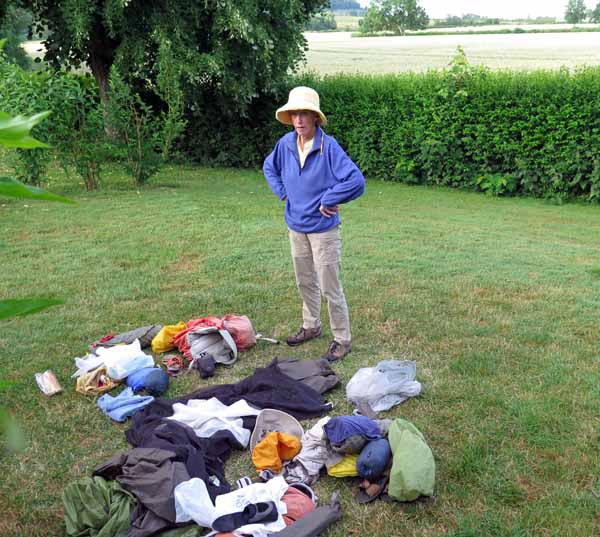
Monday, 22 June 2015
Distance 23 km
Duration 5 hours 5 minutes
Ascent 178 m, descent 196 m
Map 129 or Map 136 of the TOP100 lime-green series
We were doing a couple of things differently this year, compared to other years. For one thing, because of the coolness of the season, the days of really early starts were no more than a memory.
For another, I had declared that I would not start walking until I could be pretty sure of a good breakfast. No more setting off into the unknown after just a spoonful of muesli, hoping for the best, as we had often done in the past. That was the way to starvation and misery.
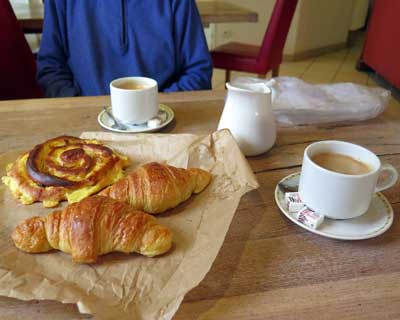
Today we left at about 7:45 am, and headed back to town in search of breakfast. This short walk demonstrated that Keith’s mysterious leg injury was not going to hold us back. He could walk perfectly well, even though the muscle remained tender.
In town, the bar of the Hotel du Commerce was open and there was a boulangerie nearby, so we were soon doing what we do best – sitting at our ease in front of large coffees, with a jug of hot milk, fresh croissants and a pain aux raisins.
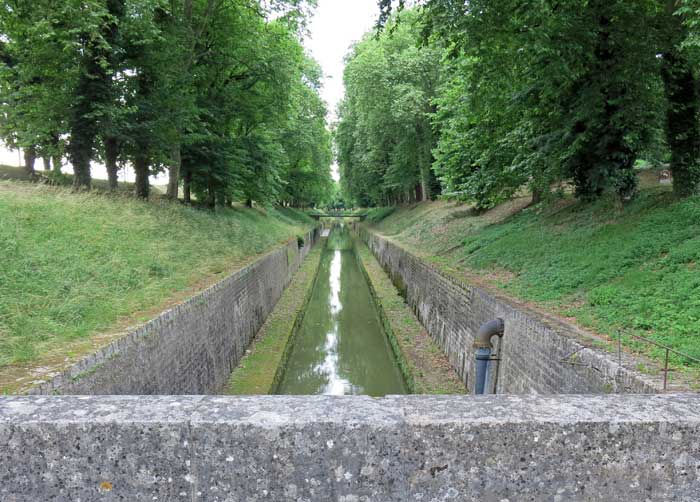
The stools at the counter were occupied by a row of men intent on their little black coffees.
After this promising start we set off in earnest, following the canal. We were on the downward run now and the locks were even closer together than on the ascent.
On either side were smooth fields, but the canal itself had the usual guard of honour of tall, straight trees.
Pale cows rested on the grass, and at Éguilly we passed a small, handsome twelfth-century château, now restored as a gallery of contemporary art. Soon after that we turned away from the canal for the day.
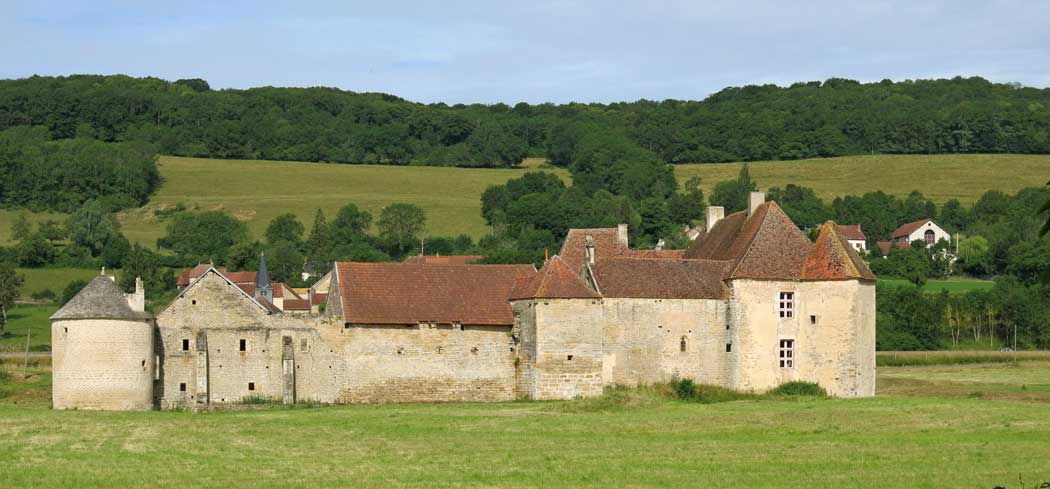

We had to turn off because we had not been able to find anywhere on the canal to spend the night between Pouilly and Venarey, which was more than a day’s walk.
Our idea was to go to the camping ground at Vitteaux, and rejoin the canal the next morning.
Crossing a little bridge, we found ourselves on the highway (the D970), a few steps from a large roadside bar-restaurant that we had seen on the map and had been hoping would be open.
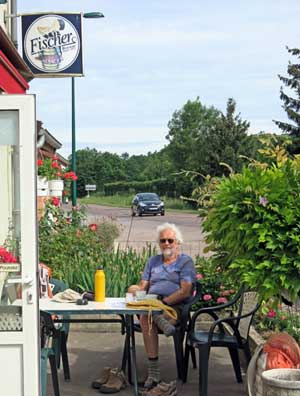
It was, and we had the pleasure of a second round of coffee on a flowery terrace in the mild morning sunshine.
From the bar we took a quiet, rising side road for half an hour to the hamlet of Soussey, and then a much steeper one which degenerated into a stony wheel track, possibly the remains of a cobbled road, to the top of the escarpment, where an undulating plateau of wheat opened out before us, stretching for miles. We joined a small road and set off across it.
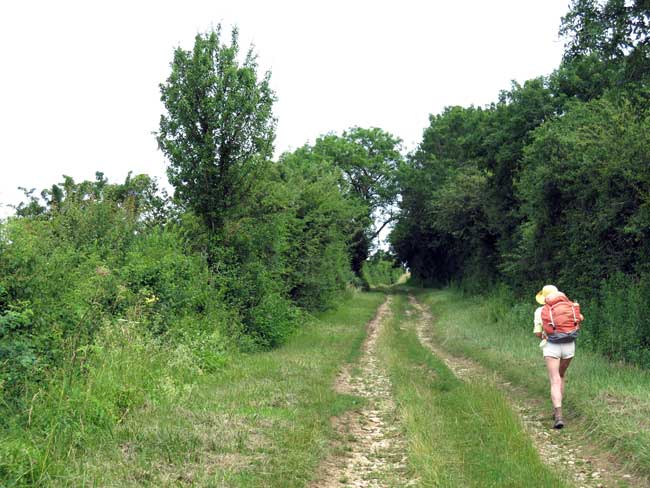
We only met one car in the hour that it took to cross this tranquil upland, and it stopped beside us.
The occupants were looking for some archaeological site nearby, but we had never heard of it, so they drove on.
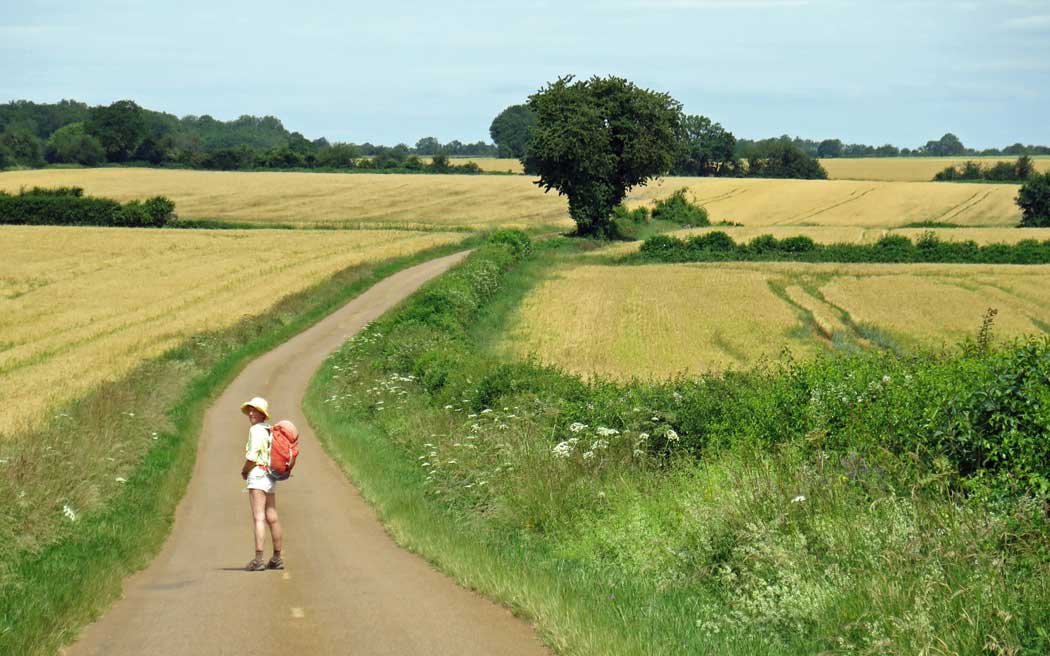
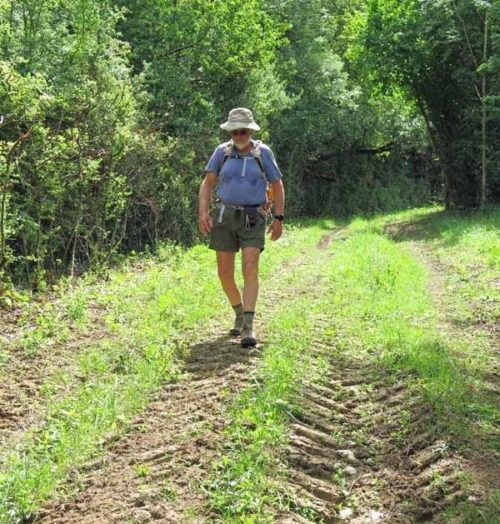
At the other end of the plateau, marked by a mobile phone tower, our road started to descend in hairpins, but we took a plunging short cut down a forest track, rejoining the road just above the village of Vesvres, which was a charmingly haphazard collection of cottages clustered under the church, like chickens under a mother hen.
At the bottom of the village, where the road turned off to Vitteaux, we met the same carload of people who had asked us about the archaeological site. They were eating sandwiches on a park bench, and assured us that they had found what they were looking for, but we never found out exactly what it was.
It was a short, easy walk down to Vitteaux, which lay in a shallow bowl of farmland. We skirted around the centre of the town and made for the camping ground at the western edge, beside a park.
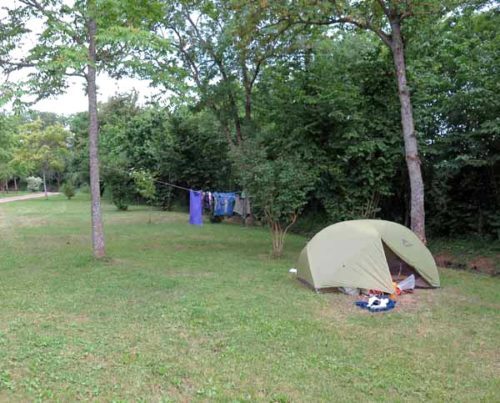
The office looked like a station on some long-disappeared railway line (which is what it was, we later discovered). There was nobody about, but everything was immaculate – mown lawns, flower beds and a new-looking shower block with copious hot water.
We put up our little tent, washed our clothes and ourselves, then had a moment of repose in the shade of a young ash tree. There was only one other tent and no caravans in the place.
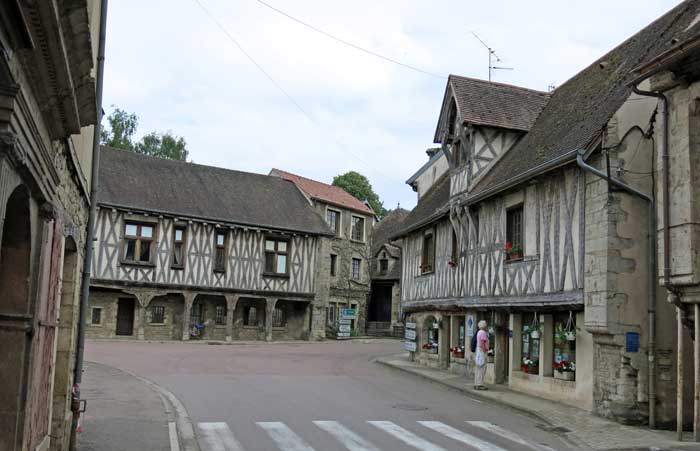
At about 5 pm we set off to see the town. Arriving in the main street, we were astonished to see many shops abandoned or boarded up.
It was even more surprising because the place had the makings of a Plus Beau Village – a massive slate-roofed market hall jutting out into the roadway, magnificent houses with half-timbering, dormer windows and elaborate doorways, arcades supported on grey, cracked, age-old posts, plus other architectural delights.
We saw two bars, which were open and five restaurants, which were not and never would be again, by the look of them.
At the Office of Tourism we found that there was actually nowhere to get an evening meal in the town.
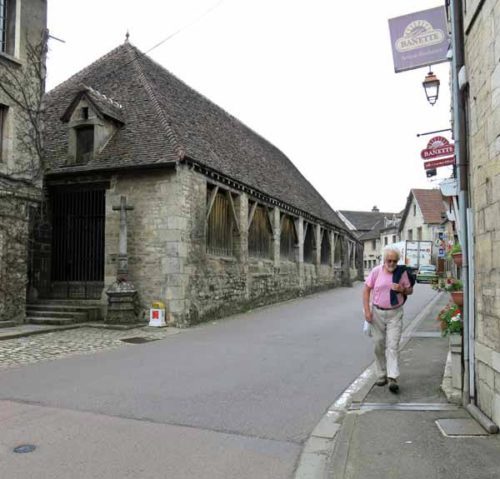
We never worked out what misfortune had reduced Vitteaux to such a state, and all we could do was go to the huge ATAC supermarket on the other side of town, where we got a bottle of wine, a tomato and a cake of soap (we still had salad and rillettes from Bligny).
On the way back to the camping ground we bought some fresh bread and stopped at a bar for our customary apéros of pastis and rosé, under a white umbrella on a tiny side terrace.
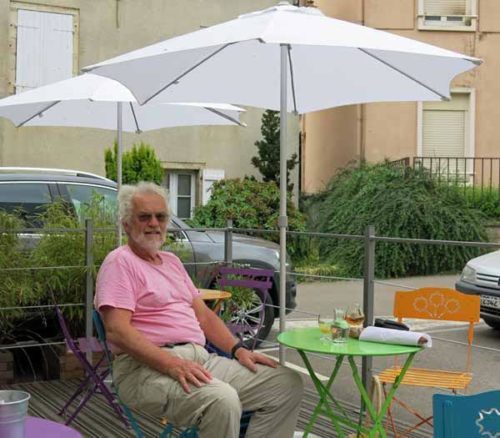
It looked a likely spot for breakfast in the morning but unluckily for us, there was a notice announcing that they would be closed exceptionally tomorrow. Nevertheless we enjoyed our brief taste of the good life there.
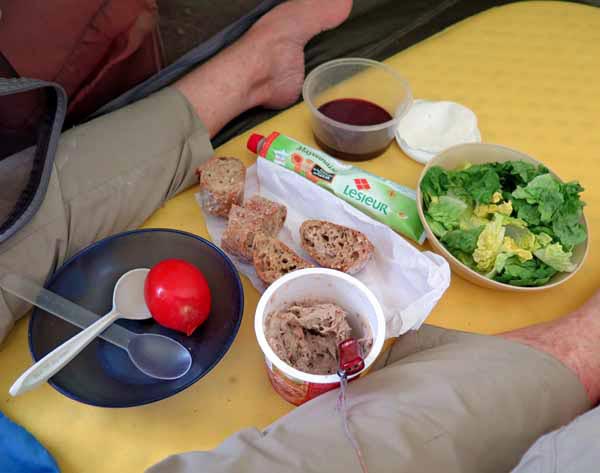
Back at the camping ground, the owner of the other tent had arrived and so had a campervan, but we had no time to make their acquaintance before a violent rainstorm swept in and we dived into the tent, where we had a rather cramped but delectable picnic.
When we had finished and were almost asleep, a woman from the Mairie called around to collect the €7.40 that we owed, apologising for the lateness of the hour. It showed noble dedication to her duty, considering the rain.
Previous day: Bligny-sur-Ouche to Pouilly-en-Auxois